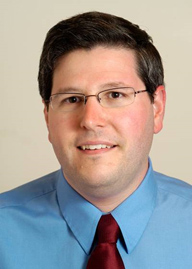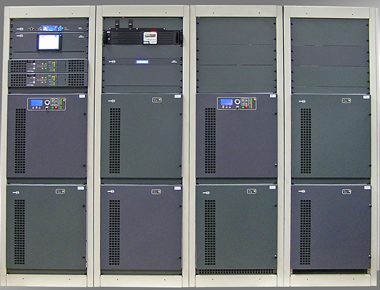Solid-State Transmitters: A Conversation with Rich Redmond

Rich Redmond
ALEXANDRIA, VA.—Recent advances in high-frequency transistors has led to solid-state UHF transmitters that challenge the power outage and efficiency of multi-stage depressed collector IOT designs. In theory, this is good for everyone (except for IOT vendors), as solid-state designs have the potential for long life and low maintenance.
Still, are we at the point where solid-state technology has shouldered aside MSDC IOTs for dominance in mid- to high-power UHF TV transmitters? To find out, Broadcast Engineering Extra spoke to Rich Redmond.
Redmond serves as chief product officer for GatesAir, responsible for the marketing, product line management and R&D of the company’s transmission products. He is based at the company’s headquarters in Mason, Ohio, outside of Cincinnati.
BE Extra: What’s the current state of the art for solid-state UHF transmitters? Are they up to the efficiency levels of tube (MSDC) transmitters for mid-power applications?
Redmond: Developments in the next-generation technology for solid-state UHF transmitters, such as the GatesAir Maxiva line featuring Powersmart 3D, now bring tube-type efficiencies to the market at a competitive price. While efficiencies are similar to a tube product, the real benefit comes from a lower total cost of ownership when you look at the overall costs, including maintenance, space and tube replacements.
BE Extra: What accounts for the improved efficiency of modern solid-state transmitters? Are the transistors better?
Get the TV Tech Newsletter
The professional video industry's #1 source for news, trends and product and tech information. Sign up below.
Redmond: Although advancements in RF device design do play a part, it is a combination of factors to get the overall performance improvements. These include RF amplifier circuit design, advancements in adaptive correction, power supply efficiency improvements and innovation in liquid cooling systems. All these critical building blocks play a role in achieving low total cost of ownership.
BE Extra: Are we at the point where it’s reasonable to use a solid-state UHF transmitter instead of a tube transmitter for medium- to high-power applications?
Redmond: Absolutely, in fact we have several customers that we have delivered new high-power UHF TV transmitters to that are replacing tubes with our solid-state technology. In fact, this year we shipped the world’s highest-power solid-state digital TV transmitter, the Maxiva ULXT 80, to a U.S. broadcaster.
BE Extra: Operationally, what are a couple differences between solid-state and tube transmitters? Do they require different types of regular maintenance?
Redmond: In general, solid-state transmitters require less maintenance using a more commonly available skill set than their tube predecessors. This reduction and simplification of maintenance comes from lightweight and hot-swappable power supplies and RF amplifier modules, complete remote diagnostics via a web-based user interface and monitoring solution, and a simplified liquid cooling system. In addition, the elimination of dangerous high voltage power supplies and complex tube-tuning procedures really drives down the ongoing operating costs.

GatesAir ULXT-80 solid-state transmitter
BE Extra: We all expect that solid-state devices will have long operational lives. Is this true of solid-state UHF transmitters, and what does that mean for costs over the lifetime of the product?
Redmond: GatesAir (and Harris before it) has been building solid-state transmitters for more than 40 years. In fact, some of our first solid-state AM transmitters are still in service. The company’s philosophy of design is the foundation of every transmitter we build, including today’s high-power systems for UHF digital TV. This longevity pays dividends for the users in long-term reliable operation, low operating costs and simplified upkeep, all resulting in the lowest total cost of ownership.
BE Extra: What else should we know about solid-state transmitters? Do they act differently than tube transmitters when it comes to retuning, for example?
Redmond: Well-designed solid-state transmitters use broadband high-efficiency amplification and frequency-agile exciters, so that frequency changes are a matter of entering the new channel and the transmitter is optimized for those parameters. In other solid-state designs—and certainly in tube units—channel changes are a much more complex and costly proposition. It is this flexibility that has been very attractive to our customers who have been installing them, knowing that any future change in channel gets that much simpler on the transmitter end of the equation.
Bob Kovacs is the former Technology Editor for TV Tech and editor of Government Video. He is a long-time video engineer and writer, who now works as a video producer for a government agency. In 2020, Kovacs won several awards as the editor and co-producer of the short film "Rendezvous."

